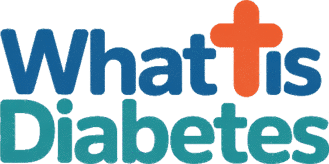Understanding Severe Insulin-Deficient Diabetes

What if the key to understanding your health lies in knowing the distinctions between different types of diabetes? Severe Insulin-Deficient Diabetes (SIDD) presents unique challenges that set it apart, but this critical insight can make all the difference in effective management.
What You Will Learn
- SIDD is characterized by a significant lack of insulin production, distinct from Type 1 and Type 2 diabetes.
- Patients may present with symptoms like extreme fatigue, unintended weight loss, and frequent urination.
- Recognizing risk factors such as obesity and physical inactivity is essential for prevention and early intervention.
- Effective management strategies include insulin therapy, regular monitoring, and lifestyle modifications.
Key Distinctions and Management of Severe Insulin-Deficient Diabetes (SIDD)
SIDD is a unique form of diabetes characterized by severe insulin deficiency, differing significantly from Type 1 and Type 2. Understanding these distinctions is vital for effective management and patient care.
What Defines SIDD?
- Severely impaired insulin production
- Can emerge at any age
- Requires aggressive intervention
Key Characteristics
- Adult onset common
- Extreme fatigue, weight loss
- Frequent urination
Risk Factors
- Obesity
- Physical inactivity
- Age & Ethnicity
Management Strategies
- Insulin therapy
- Dietary guidelines
- Regular monitoring
Understanding Severe Insulin-Deficient Diabetes (SIDD)
Severe Insulin-Deficient Diabetes (SIDD) is a clinical term that denotes a specific form of diabetes characterized by a significant lack of insulin production in the body. This condition is distinct from Type 1 Diabetes and Type 2 Diabetes, where the underlying issues and management strategies can differ greatly. While Type 1 typically arises from autoimmune destruction of pancreatic beta cells, and Type 2 often involves insulin resistance, SIDD represents a more severe insulin deficiency that can complicate treatment and increase health risks.
Understanding SIDD is crucial as it helps guide appropriate treatment plans. In fact, recognizing the nuances between these diabetes types allows patients to make more informed decisions regarding their health management strategies. The American Diabetes Association's practice guidelines provide comprehensive resources for effective diabetes management. At What Is Diabetes, we aim to empower individuals with knowledge to navigate their diabetes journey effectively!

What Defines SIDD and Its Distinctions
To better grasp what SIDD entails, let’s examine how it diverges from other forms of diabetes:
- Insulin Production: SIDD patients have severely impaired insulin production, often requiring immediate insulin therapy for blood sugar management.
- Onset and Progression: Unlike Type 1, which often presents in childhood, SIDD can emerge at any age, sometimes following a period of insulin resistance typical of Type 2.
- Management Complexity: Given the severity of insulin deficiency, SIDD management often requires a more aggressive intervention compared to traditional diabetes treatments.
By understanding these distinctions, we can tailor management approaches that address the specific needs of SIDD patients, emphasizing the importance of early diagnosis and targeted treatment strategies.
Clinical Characteristics of SIDD Patients
Patients diagnosed with SIDD typically display certain demographic and clinical characteristics that can guide healthcare providers in their treatment. For instance, many SIDD patients are often adults who may have previously been diagnosed with Type 2 Diabetes. Common symptoms include extreme fatigue, unintended weight loss, and frequent urination—all signs of elevated blood sugar levels.
In addition to these symptoms, genetic predisposition plays a significant role in SIDD. Family history of diabetes, particularly in cases where relatives have experienced severe insulin deficiency, can indicate a higher risk for developing this condition. Lifestyle factors, including a sedentary lifestyle and poor dietary choices, can exacerbate the severity of SIDD, making prevention and management essential!
Causes and Risk Factors Contributing to SIDD
Underlying Mechanisms Leading to Insulin Deficiency
The pathophysiology of SIDD involves complex metabolic pathways that affect glucose metabolism. In individuals with SIDD, the pancreatic beta cells—which are responsible for producing insulin—are significantly damaged or dysfunctional. This dysfunction leads to inadequate insulin output, hindering the body’s ability to process glucose effectively.
Moreover, the continuous insulin deficiency can create a cycle of increased blood glucose levels, further stressing the already compromised pancreas. It's vital for individuals with SIDD to monitor their blood sugar levels closely and understand how their bodies react to different foods and activities.
Identifying Risk Factors for SIDD Development
Identifying risk factors for SIDD is essential for prevention and early intervention. Here are some common factors that contribute to the development of this condition:
- Obesity: Excess body weight can lead to insulin resistance, which may ultimately result in SIDD.
- Physical Inactivity: A sedentary lifestyle significantly increases the risk of developing various forms of diabetes, including SIDD.
- Age and Ethnicity: Older adults and certain ethnic groups, such as African Americans and Hispanics, are at higher risk for severe insulin deficiency.
By recognizing these risk factors, you can take proactive steps to mitigate them. Simple lifestyle changes can make a significant difference in managing your health and preventing the onset of SIDD. For further insights into diabetes care and risk management, the American Diabetes Association's Standards of Care offer valuable guidance.
Pro Tip
To effectively manage Severe Insulin-Deficient Diabetes (SIDD), consider implementing a meal planning strategy that emphasizes whole, nutrient-dense foods. Incorporating a variety of vegetables, lean proteins, and healthy fats can help stabilize blood sugar levels and improve overall metabolic health. Additionally, regular monitoring of blood glucose can provide insights into how different foods affect your body, empowering you to make informed choices in your dietary habits.

Frequently Asked Questions about Severe Insulin-Deficient Diabetes (SIDD)
- Q: What is Severe Insulin-Deficient Diabetes (SIDD)?
- A: SIDD is a distinct form of diabetes characterized by a significant lack of insulin production in the body, differentiating it from Type 1 and Type 2 diabetes.
- Q: How does SIDD differ from Type 1 and Type 2 diabetes?
- A: Unlike Type 1 (autoimmune) or Type 2 (insulin resistance), SIDD specifically involves severely impaired insulin production. Its onset can be at any age, and it often requires more aggressive insulin intervention.
- Q: What are the common symptoms of SIDD?
- A: Patients with SIDD often experience extreme fatigue, unintended weight loss, and frequent urination, all of which are indicators of elevated blood sugar levels.
- Q: What are the key risk factors for developing SIDD?
- A: Significant risk factors include obesity, physical inactivity, older age, and certain ethnic backgrounds such as African American and Hispanic populations.
- Q: What are the primary management strategies for SIDD?
- A: Effective management includes insulin therapy, adherence to dietary guidelines emphasizing whole foods, and regular monitoring of blood sugar levels.
Summarizing Key Insights on SIDD
In our exploration of Severe Insulin-Deficient Diabetes (SIDD), we’ve highlighted several key aspects that define this condition. SIDD is characterized by a significant lack of insulin production, leading to complex health challenges that set it apart from Type 1 and Type 2 diabetes. Understanding these differences is crucial for effective management.
We also discussed the risks associated with SIDD, which include complications such as diabetic retinopathy and cardiovascular disease. Recognizing these risks empowers both patients and healthcare providers to implement necessary preventive measures. Additionally, we explored various management strategies, which are vital for maintaining optimal health.
- Defining Features: Severe insulin deficiency, unique metabolic pathways, and differing symptoms from other diabetes types.
- Health Risks: Increased likelihood of complications like nephropathy and cardiovascular issues. For a detailed understanding of the clinical characteristics and management of SIDD, a study published in PMC NCBI provides valuable information.
- Management Strategies: Insulin therapy, dietary guidelines, and the need for regular monitoring.
As we summarize, it’s important to keep in mind that effective management of SIDD requires collaboration among patients, healthcare providers, and support systems. Informed patients are better equipped to navigate their health journeys.
Encouraging Proactive Health Management
As we conclude this section, I want to encourage everyone to take an active role in their health management—especially if you or a loved one is dealing with SIDD. Early diagnosis and regular monitoring are key to preventing complications and improving quality of life. It’s essential to consult with healthcare professionals who can provide personalized management plans tailored to your specific needs.
Additionally, understanding health disparities in diabetes care can help bridge gaps in treatment. By seeking out resources and support, you can advocate for yourself and others in the community. Here are some steps you can take:
- Schedule regular check-ups with your healthcare provider.
- Engage in discussions about your management plan and any concerns you have.
- Utilize community resources, such as support groups or educational workshops.
Together, we can work towards a healthier future, where informed choices lead to better outcomes. So, what steps will you take today to empower your health journey? Let’s make informed decisions and support one another as we navigate the complexities of SIDD!
Recap of Key Points
Here is a quick recap of the important points discussed in the article:
- Definition: Severe Insulin-Deficient Diabetes (SIDD) is characterized by significant insulin deficiency, requiring careful management.
- Distinctions: SIDD differs from Type 1 and Type 2 diabetes in its onset, progression, and management complexity.
- Symptoms: Common symptoms include extreme fatigue, unintended weight loss, and frequent urination.
- Risk Factors: Obesity, physical inactivity, and certain age and ethnic demographics increase the risk of developing SIDD.
- Management Strategies: Effective management includes insulin therapy, dietary modifications, and regular blood sugar monitoring.







